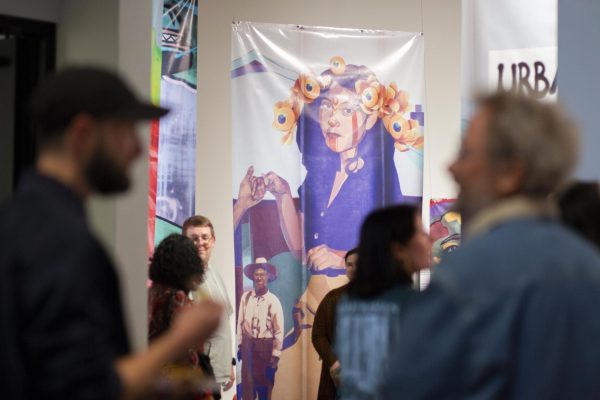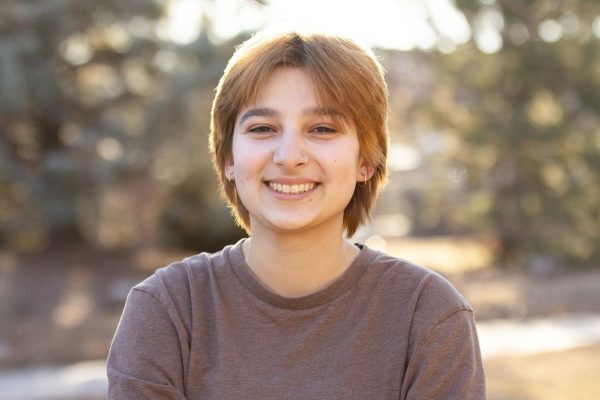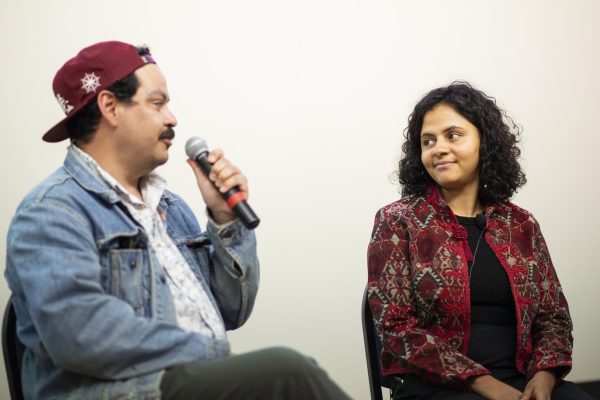
After breaking a Guinness World Record for her work on the Beachner Grain elevator mural in north Wichita, Nathalia Gallego is back, this time to create a mural at Wichita State University.
Gallego, known as GLeo, is a Colombian street artist and muralist whose work has been displayed all over the world. Her soon-to-be mural at Wichita State will be on the Duerksen Fine Arts Center amphitheater and is part of the university’s efforts to become a Hispanic-Serving Institution.
In a part-English, part-Spanish and part-Spanglish discussion hosted by the Ulrich Museum of Art, Wichita artist Armando Minjarez and GLeo discussed their collaborative process in the past and how it will extend to the planned mural.
“When we work collaboratively, there’s a lot of emotion and feeling that goes into it,” Minjarez said. “You’re building a relationship with somebody or with a team or with your crew, and your vibes have to vibe, right?”
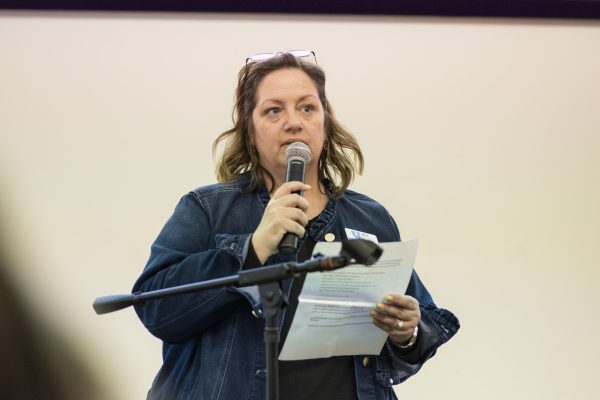
‘Ripples of collaboration’
The artists’ relationship began when Minjarez reached out to GLeo via Instagram to work on the Beachner Grain elevator mural over five years ago as part of Horizontes, a community project that aimed to “connect two underrepresented neighborhoods in north Wichita.”
“We’ve been saying that this (new mural) is done in the spirit of Horizontes,” Minjarez said. “What that means for us is that Horizontes … was about solidarity but also an understanding that those (Latine and other underrepresented) communities have been here in Wichita for a very long time.”
Minjarez said there are narratives that imply “that we just arrive, and then ‘Oh God. How do we deal with, you know, these Brown people that don’t speak English?’”
Minjarez extended this idea to Wichita State, saying he wants to see tangible support for Latine and Hispanic students, especially as the university attempts to become a Hispanic-Serving Institution.
“The university is wanting to recruit; a mural is not going to do it,” Minjarez said. “Hopefully it’ll start a conversation, but ultimately, the university needs to put more money into hiring more staff and faculty that can support those students.”
The WSU mural project began to take life with the work of Kristin Beal, a curator at the Ulrich, and Minjarez, who used to work in the Office of Diversity and Inclusion.
Throughout the discussion, Minjarez and GLeo continued to return to “ripples of collaboration,” an idea they saw emerge throughout their time on the grain elevator mural, as well as other Horizontes projects.
“There’s layers, right, whenever you’re working, when you engage people in a meaningful way,” Minjarez said.
GLeo said this idea became evident when trying to communicate as someone not fluent in English. She said throughout her work in Wichita, Minjarez and other community members took “care” to support her passion and work.
“When I’m in a collaboration, I really try to make sure that everything is working out for anyone involved,” Minjarez said, translating for GLeo. “It can also be difficult because as you’re making sure that you’re taking care of everyone else, you stop taking care of yourself … or you feel like you’re being egotistical by taking care of yourself.”
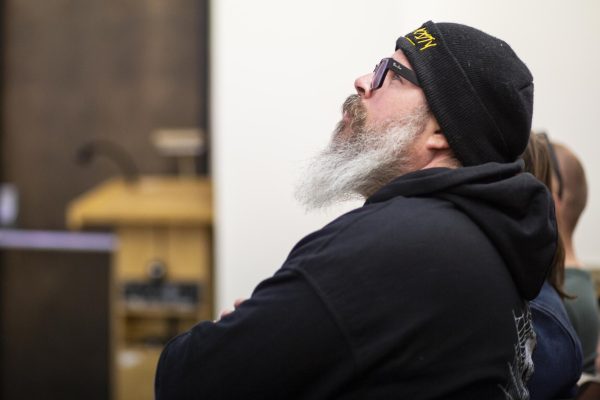
Working with community
Initially, GLeo created potential designs for the mural, but upon meeting with students in the Hispanic American Leadership Organization (HALO), she scrapped her ideas and began anew.
Kariana Massingill, membership and retention coordinator for HALO, said much of the research and knowledge done by HALO for Belonging Plaza, a mobile monument, will be used in the GLeo’s creation of the mural. Recently, Belonging Plaza honored several Latine Shockers, an effort put together by the students in HALO.
“It was very fun, just like finding out more about people’s lives and how long Latino and Hispanic representation has been on campus and … how much it has grown,” Massingill said. “It’s very nice to see just how far we’ve gone and how much we can continue to grow from there.”
Massingill said it was exciting for students to meet GLeo and have a hand in the mural.
“From what (GLeo) told us, she’s just very excited and just happy to see students wanting to be involved and help as much as possible within this project,” Massingill said. “She’s very thankful.”
For the rest of April, GLeo will be out at the amphitheater, painting. Her work can be found here.
